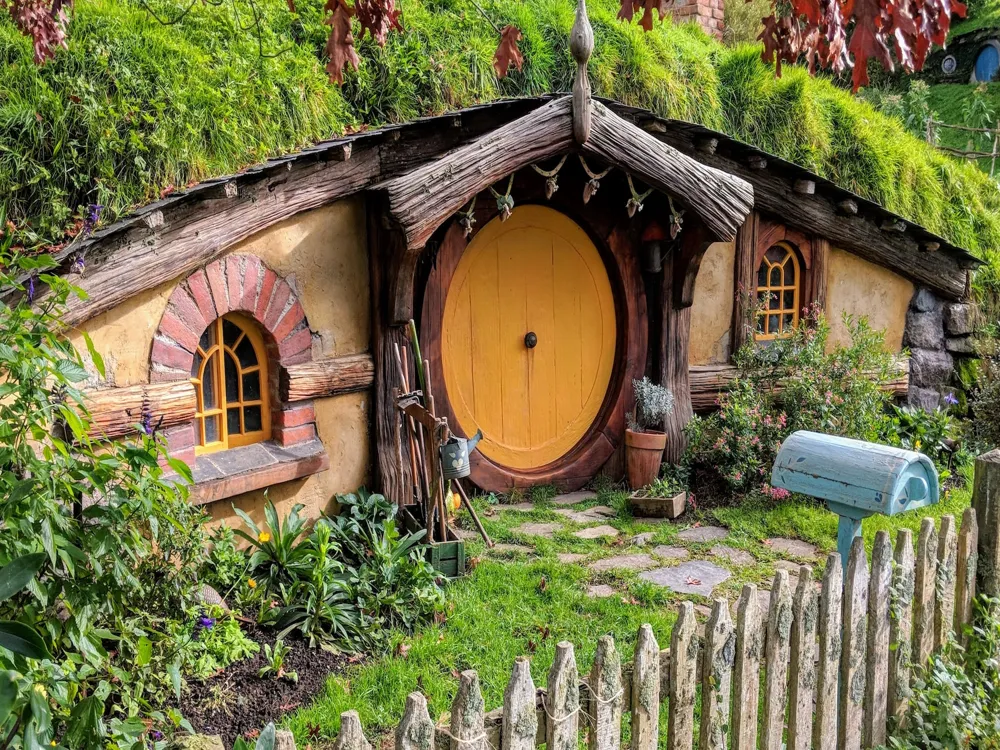Albert Park, a historical and artistic gem, is nestled in the heart of Auckland, New Zealand. This green oasis, spread over several acres, offers a tranquil retreat amidst the bustling metropolis. Renowned for its Victorian-period charm, the Park is a testament to Auckland's rich heritage and natural beauty. It has been a vital part of the megacity's geography since its commencement in the late 19th century, serving both as a recreational space and a historical corner. The architecture of Albert Park in Auckland is a splendid display of puritanical design and artifice. The demesne's layout and structures are characterised by their ornate details, literal significance, and harmonious mix with the natural surroundings. The puritanical root, a centrepiece of the demesne, is an exquisite illustration of 19th-century design, with its intricate stonework and elegant water features. This root not only serves as a visual delight but also as a symbol of the puritanical period's influence on Auckland's architectural geography. Before planning your visit, check the local weather forecast. Auckland's weather can be unpredictable, and being prepared for rain or shine ensures a comfortable experience. Albert Park's expansive grounds require a fair amount of walking. Wear comfortable shoes to fully enjoy the park's walkways and attractions without any discomfort. Don't miss the key cultural landmarks within the park, such as the Victorian fountain and the band rotunda. Each offers a glimpse into Auckland's rich history and architecture. Check the park's event schedule. Albert Park often hosts various cultural and community events, which can add a unique experience to your visit. Albert Park is surrounded by several historical and cultural sites, including the Auckland Art Gallery. Plan to explore these areas to enrich your visit. Albert Park is centrally located in Auckland, making it easily accessible via colourful modes of transportation. However, there are several parking installations, though parking can be limited during peak hours and events if you are travelling by auto. Public transport is an accessible option, with multitudinous machine routes passing near the demesne. For those staying in central Auckland, the demesne is within walking distance of numerous major hospices and attractions. Also, bike racks are available for callers choosing to cycle to the park. Regardless of your mode of transportation, Albert Park's central position makes it a hassle-free destination to reach and enjoy. Read More:Overview of Albert Park in Auckland
The park's layout is a masterclass in geography design, featuring manicured auditoriums, broad walkways, and an array of native and fantastic flora. Among its crucial attractions are the puritanical root, the band rotunda, and several significant statues and monuments. These rudiments all contribute to the park's unique air, making it a favourite spot for both locals and excursionists. Also, Albert Park serves as an artistic mecca, hosting colourful events and carnivals throughout the year that reflect the vibrant spirit of Auckland.
Beyond its beauty and recreational value, Albert Park is steeped in history. Originally used as a military bastion in the 19th century, it has witnessed several vital moments in New Zealand's history. The park's design and development over time reflected the growth and elaboration of Auckland itself. The historical significance of Albert Park is further enhanced by its proximity to several other corner structures, including the Auckland Art Gallery and the University of Auckland, making it a central point in the megacity's artistic and educational geography.
Albert Park isn't just a green space; it's a living, breathing part of Auckland's history and culture. Its winding paths and shadowed benches offer a peaceful escape, while its rich history and vibrant artistic scene give depth and environment to the caller's experience. Whether you are a history buff, a nature nut, or simply seeking a quiet spot to decompress, Albert Park is a destination that truly has commodities for everyone.The architecture of Albert Park
Another architectural highlight is the band rotunda, an iconic structure that epitomises the puritanical partiality for indirect, open-air belvederes. Used for musical performances and public gatherings, the rotunda's design reflects the period's social and artistic values. Its strategic placement within the demesne enhances the aural experience, making it a cherished venue for musicals and events.
The demesne is also home to a variety of statues and monuments, each with its own unique architectural style and literal environment. These include monuments devoted to prominent figures in New Zealand's history, offering perceptivity into the country's history and the people who shaped it. The statues aren't just cultural expressions; they're an integral corridor of the demesne's architectural narrative, each telling a story of heritage.
Albert Park's architecture extends beyond its structures to its landscaped auditoriums and walkways. The careful planning and design of these rudiments parade a mastery of geography and architecture, creating a flawless integration of erected and natural surroundings. The auditoriums, with their different ranges of foliage, are laid out in patterns that reflect the puritanical period's seductiveness with harmony and order, while the walkways are designed to give tardy ambles through the graphic settings.
In substance, the armature of Albert Park is a reflection of Auckland's literal trip. The demesne's structures and layout aren't simply aesthetic features; they're images of the megacity's architectural elaboration, offering a palpable connection to Auckland's history and a source of alleviation for unborn generations.Tips for Visiting Albert Park
Check Weather Forecasts
Wear Comfortable Footwear
Visit Cultural Landmarks
Attend Park Events
Explore the Surrounding Area
How To Reach Albert Park
Albert Park
Auckland
₹ 72,000 onwards
View auckland Packages
Weather :
Tags : Garden & Park
Timings : Anytime
Entry Fee : Free
Planning a Trip? Ask Your Question
Auckland Travel Packages
View All Packages For Auckland
Top Hotel Collections for Auckland

Private Pool

Luxury Hotels

5-Star Hotels

Pet Friendly
Top Hotels Near Auckland
Other Top Ranking Places In Auckland
View All Places To Visit In auckland
Faq on Auckland
What is Albert Park and where is it located?
Albert Park is a public park situated in the heart of Auckland, New Zealand. It is located near the Auckland University campus and is bordered by several key streets, including Princes Street and Bowen Avenue.
What is the history of Albert Park?
Albert Park has a rich history dating back to the late 19th century. It was officially opened in 1880 and has served as a central gathering space in Auckland for recreation, relaxation, and various events. The park also has historical significance due to its use as a military fortification during the 19th century.
Are there any notable features or attractions in Albert Park?
Yes, Albert Park features a range of attractions including the Albert Park Band Rotunda, several statues and memorials, a Victorian fountain, flower beds, and the famous Albert Park tunnels. The park is also home to the Auckland Art Gallery Toi o Tāmaki on its edge.
Can I visit the Albert Park tunnels?
As of my last update, the Albert Park tunnels are generally not open to the public for safety and conservation reasons. However, there have been discussions and proposals about potentially opening them up for tours or public access in the future.
Does Albert Park host any events?
Albert Park is a popular venue for various events throughout the year, including art installations, festivals, and community gatherings. The specific events vary from year to year, so it's best to check local listings or the Auckland Council website for the latest information.
View auckland Packages
Weather :
Tags : Garden & Park
Timings : Anytime
Entry Fee : Free
Planning a Trip? Ask Your Question
Auckland Travel Packages
View All Packages For Auckland
Top Hotel Collections for Auckland

Private Pool

Luxury Hotels

5-Star Hotels

Pet Friendly
Top Hotels Near Auckland
Other Top Ranking Places In Auckland
Faq on Auckland
What is Albert Park and where is it located?
Albert Park is a public park situated in the heart of Auckland, New Zealand. It is located near the Auckland University campus and is bordered by several key streets, including Princes Street and Bowen Avenue.
What is the history of Albert Park?
Albert Park has a rich history dating back to the late 19th century. It was officially opened in 1880 and has served as a central gathering space in Auckland for recreation, relaxation, and various events. The park also has historical significance due to its use as a military fortification during the 19th century.
Are there any notable features or attractions in Albert Park?
Yes, Albert Park features a range of attractions including the Albert Park Band Rotunda, several statues and memorials, a Victorian fountain, flower beds, and the famous Albert Park tunnels. The park is also home to the Auckland Art Gallery Toi o Tāmaki on its edge.
Can I visit the Albert Park tunnels?
As of my last update, the Albert Park tunnels are generally not open to the public for safety and conservation reasons. However, there have been discussions and proposals about potentially opening them up for tours or public access in the future.
Does Albert Park host any events?
Albert Park is a popular venue for various events throughout the year, including art installations, festivals, and community gatherings. The specific events vary from year to year, so it's best to check local listings or the Auckland Council website for the latest information.






















